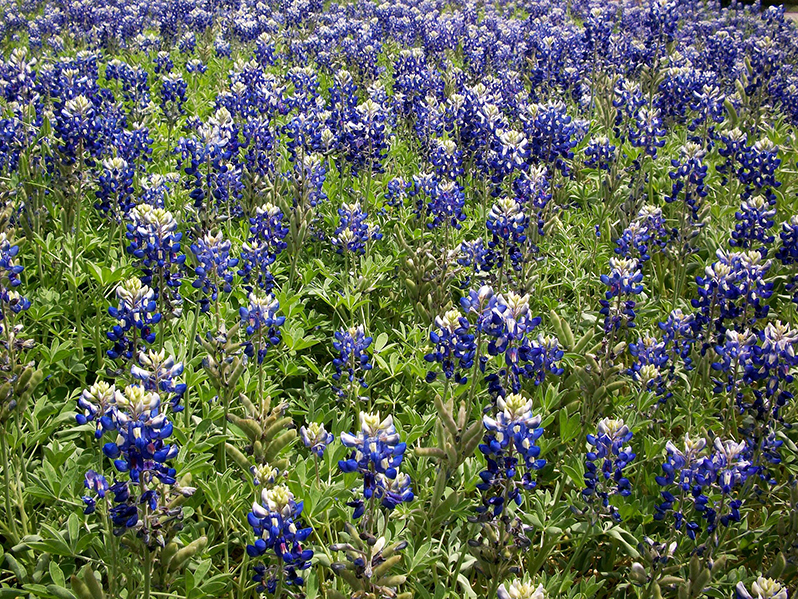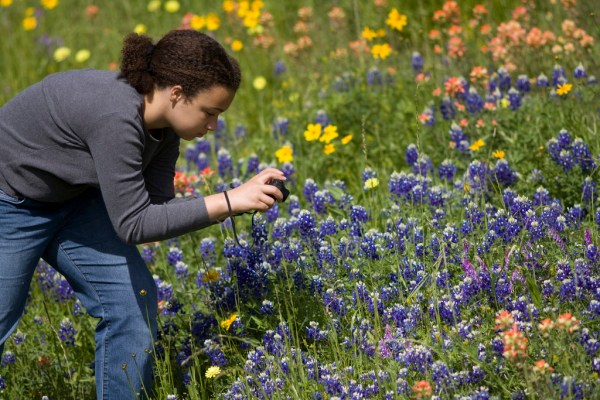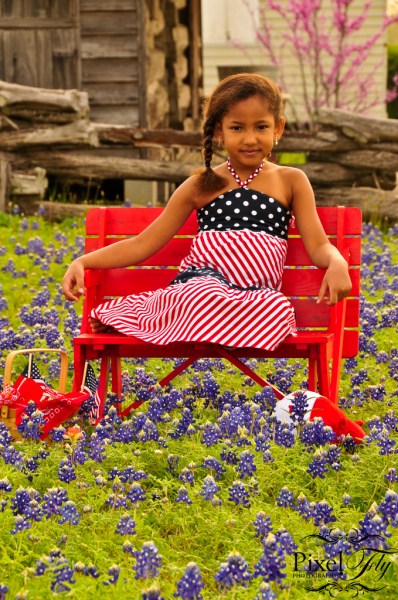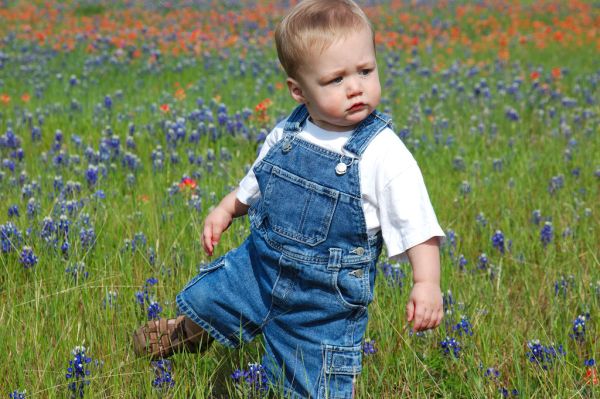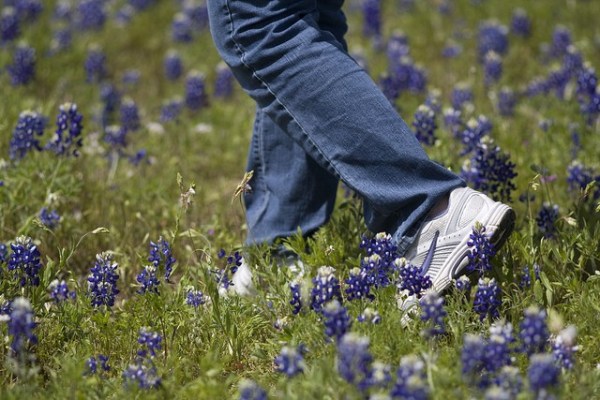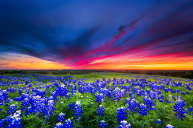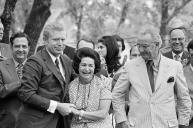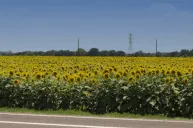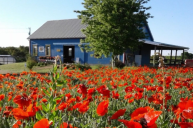It's officially bluebonnet season! The early appearance of Texas's state flower means that soon we'll be seeing motorists stopped all along the highways across the state posing for pictures among the flora. Of course, you could just pull over on Hwy 290 in the Texas hill country and snap a few smartphone pictures on a highway embankment, but it's not ideal, and it's not very safe. So here are some ideas of where to go and how to get the best and safest Texas bluebonnet pictures this season.
Videos by Wide Open Country
10. Choose a location beforehand
Take advantage of the information age we live in and scope out bluebonnet sightings online before heading out. Social media is a great place to find out where your friends have taken their pictures, and since bluebonnets are perennials, they tend to crop up in the same general locations from year to year, so even information from a year or two ago can be useful each Spring.
Brenham, in particular, prides itself on their copious bluebonnet blooms each year, but generally anywhere along Hwy 290 and around the Hill Country has an impressive bluebonnet field. Fredericksburg also is a great place to find them. If you can't locate any wild areas, you can always check out local botanical gardens and wildflower centers, such as the Ladybird Johnson Wildflower Center in Austin.
9. Time your photo shoot properly
The best times to take photographs are 8-10 AM, or late in the afternoon/early evening during what photographers refer to as "the golden hour," when the light is softer and redder. You will get the best lighting during these times. The harsh, overhead lighting of noon may make the Texas wildflowers look pretty, but it results in squinty photographs.
Regardless of the time of day you're shooting pictures, make sure your subject is not backlit, that is, be sure that the light source is to your back or at a 45-degree angle behind you, or you will end up with extremely well-lit bluebonnets and a subject hidden by shadows.
8. Consider the weather
Rain can spoil your pictures, and when the weather is too sunny and hot, it can put you and your loved ones at risk of sunburn and heat exhaustion. Also, because this is Central Texas where the weather turns on a dime, you should also be aware that sometimes we get late cold snaps.
Sometimes, though, gray days when there is no rain can result in beautiful pictures that display incredible clarity, like the image above. Just make sure you use sunblock, whether it's gray out or if the sun is shining because UVA rays can still break through grey clouds and burn sensitive skin.
7. Bring the highest quality camera you have.
Some smartphones can take incredible pictures these days. If using a smartphone, you download an app that allows you to control your aperture (f-stop). An aperture of 4 or 4.5 will make your photos look more professional.
If you've got a better quality DSLR camera, though, or can borrow one from someone who trusts you, that's usually preferable to a smartphone. Regardless of what kind of camera you bring, make sure you have ample digital storage on that device for the dozens of pictures you'll be taking, and make sure that it's fully charged.
6. Be on the lookout for local wildlife.
Every year this picture of a rattlesnake in the bluebonnets circulates the web, and while we know of no verifiable news stories of anyone sustaining a snake bite while taking bluebonnet photos, it's always good to be vigilant. Remember that the field where you're tromping is usually the home to many different forms of wildlife, and be aware of the presence of both hazardous animals and cute ones, which might still carry diseases. Another thing to be on the lookout for is stinging insects like fire ants and wasps.
5. Prepare for the photo shoot.
It's springtime so flopping down into a field of flowers could result in some muddy shorts. Also, it's generally hard to find a place to sit that won't be smashing some bluebonnets down, and we want to preserve them for our fellow Texans for as long as possible until they go to seed.
Small chairs are great for pictures of your little ones because they'll keep their pants un-muddied and the bluebonnets un-squashed. You could also bring something for your loved one to hold, like a sign or a wooden cutout.
Also, consider your wardrobe. Branded clothing and clothing featuring licensed characters don't photograph as well as neutral clothing. Your little princesses might love Frozen, but Anna and Elsa probably aren't the best clothing choices for bluebonnet pictures.
4. Don't neglect other wildflowers.
Though bluebonnets are the official state wildflower, Texas is home to many native wildflowers that are both beautiful and fragrant. If you encounter a field that is full of red, pink, yellow and purple, stop and appreciate the beauty of those too. It's spring! Why not?
3. Be aware of the background.
Try to frame your pictures so that the background is full of nature and pastoral imagery. Avoid areas with lots of commercial property in the background, billboards or advertising. More desirable backdrops include trees, fences, houses, and barns.
Sometimes, even in commercial areas, photos can be framed so that all that is shown in the picture is the subject and the bluebonnets, you can do this by getting on the same level as your subject, and fill the whole frame with your subject, rather than leaving a lot of space above their head at the top of the picture.
2. Obey the laws.
Make sure that you're not breaking any laws to get your bluebonnet photos. If you do select a field that is right off the highway, make sure to pull your vehicle all the way over on the shoulder, so you don't create a hazard for other drivers. Also, park on the side where you will be taking pictures, do not cross lanes of traffic on foot to get to the bluebonnets.
When snapping pictures inside the city limits somewhere, be sure that you're not parking in a no-parking zone or blocking anyone's driveway. Also, be considerate and make sure you're not trespassing on private property, whether you're in town or out in the country. Chances are if you have to hop a fence to get to the bluebonnets, that's probably private property.
1. Take only pictures, leave only footprints...or wildflower seeds.
Despite popular public opinion, according to the Texas Department of Public Safety, it's not technically illegal to pick bluebonnets. It is, however, highly discouraged and considered extremely rude. First of all, once you pick a bluebonnet, it is no longer there for the next person who comes along to enjoy it. Also, bluebonnets are perennials, which means they need to be left alone to go to seed so that they can come back just as thick and beautiful next spring.
Always remember not to mess with Texas. That is to say, be sure you do not litter. Put any empty water bottles or granola bar wrappers back in the car or in a public trash can if one is available. It is a good idea, though, when heading out to take pictures, to bring a packet of bluebonnet seeds with you to scatter along the highway or field to ensure that they keep blooming each year. That's something your fellow Texans will thank you for leaving behind.
